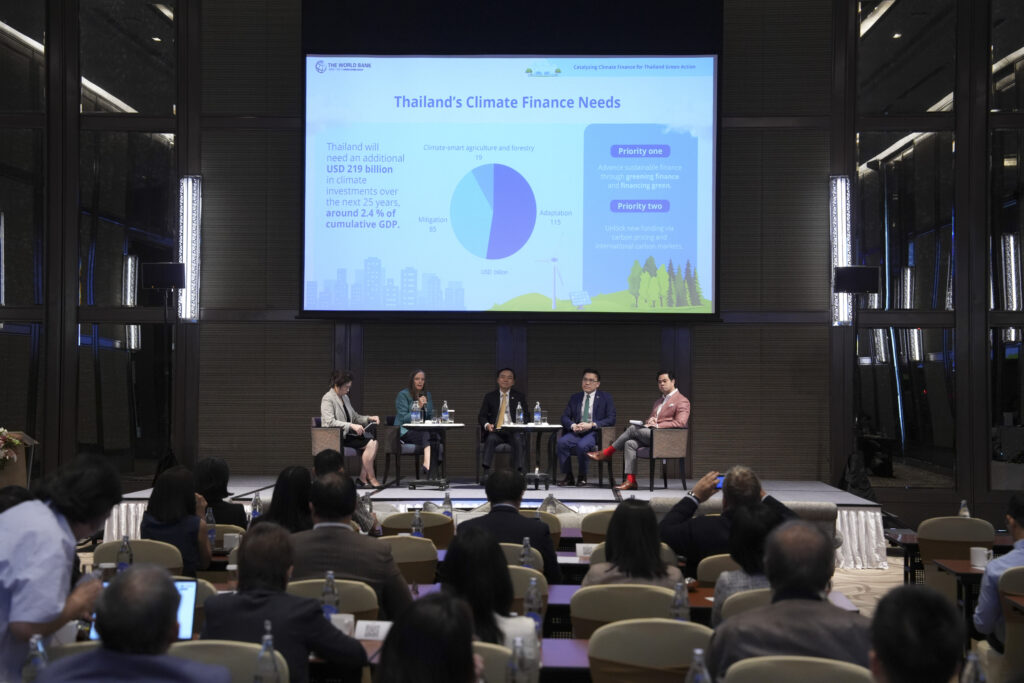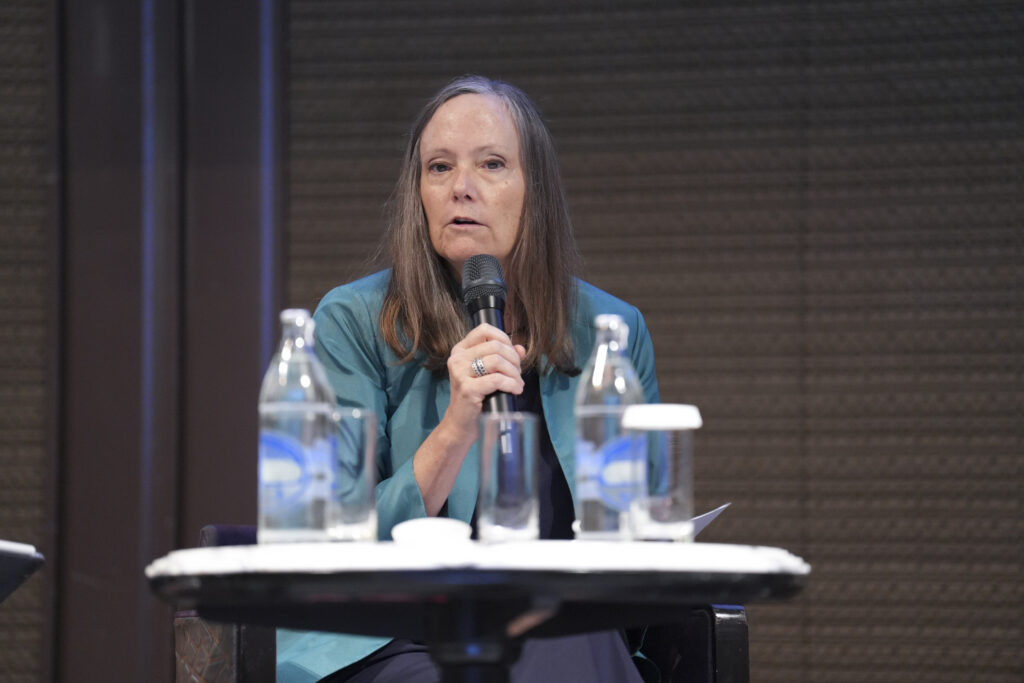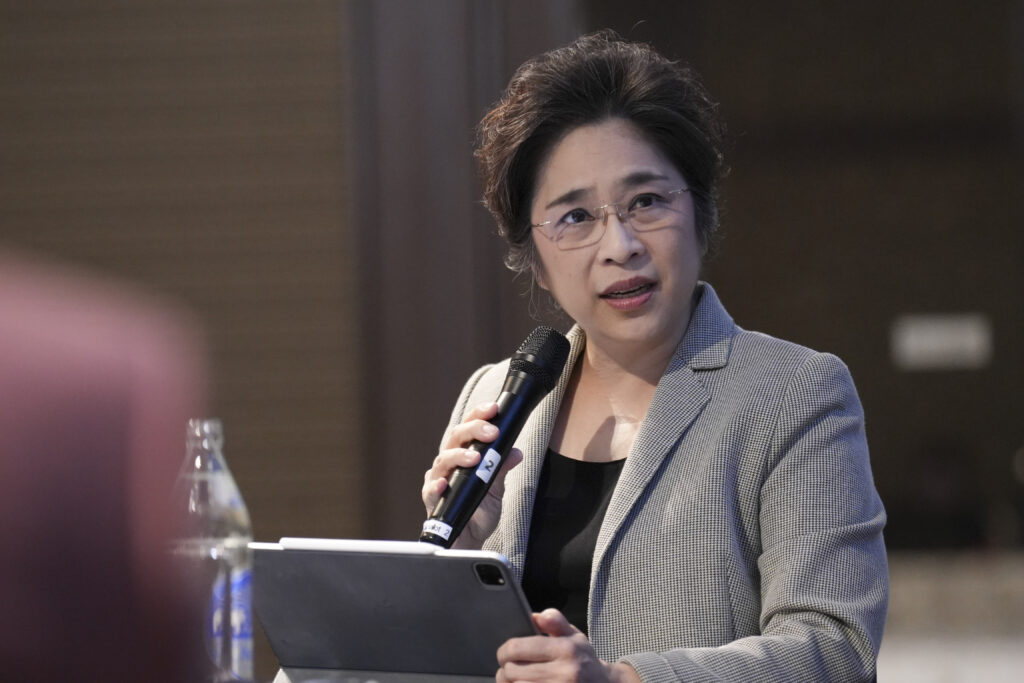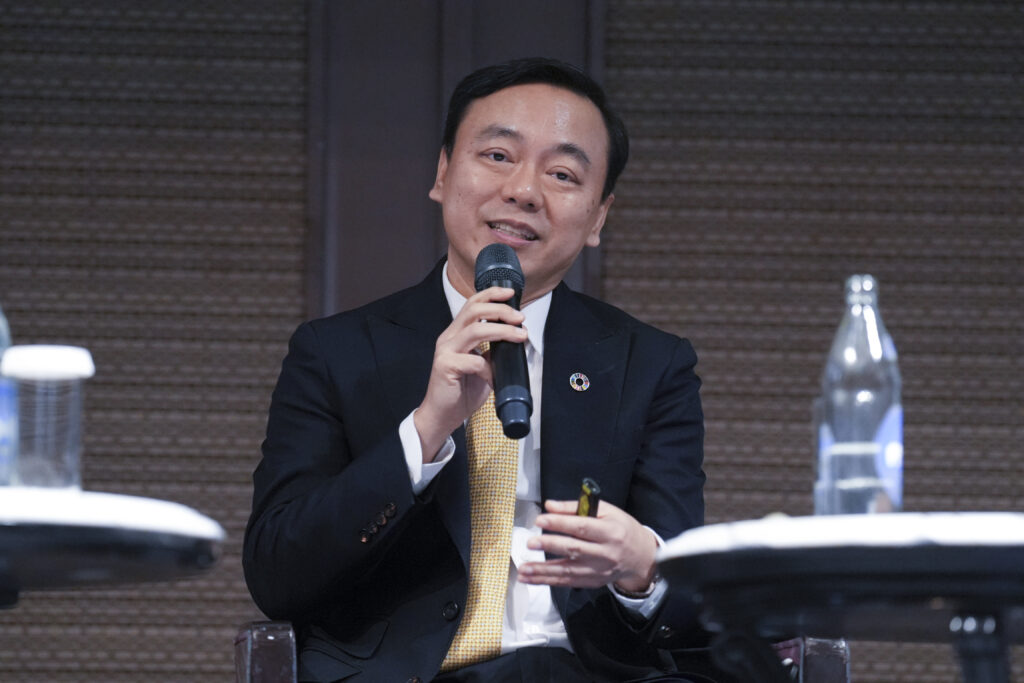As Thailand continues to grow, so too are the greenhouse gas emissions resulting from increased economic activities, population growth, and urban expansion. The country has responded to the need to mitigate its emissions to ensure socio-economic sustainability via its Nationally Determined Contribution (NDCs), which includes an unconditional emissions reduction target of 30% and a conditional target of 40% by 2030, in addition to achieving carbon neutrality by 2050 and net-zero emissions by 2065.
Although there have been marked increases in the country’s climate financing, achieving the NDCs requires more work. This call-to-action was spotlighted during a panel discussion titled ‘Climate Mitigation Finance: Taking Stock and Looking Forward’, held during the launch of the 2025 Climate Finance Tracker by Climate Finance Network Thailand (CFNT) on 21 July 2025.

Unlocking New Sources of Financing
Melinda Good, Division Director for Thailand and Myanmar, World Bank, stated that Thailand is already making significant progress in sustainable finance. According to the Sustainable Banking and Finance Network (SBFN). Thailand is classified as being in the ‘implementation’ stage—reflecting tangible progress and aligning with the majority of SBFN member countries globally.
To accelerate the flows of global climate finance into Thailand, she emphasized two key priorities.
1. Further advance sustainable finance actions through:
- Greening Finance, which means enhancing the financial system’s ability to identify, manage, and disclose climate-related financial risks.
- Financing Green, which means scaling up the flow of capital into climate-smart projects and technologies that reduce emissions or build resilience.
2. Unlocking new sources of sustainable finance through carbon pricing and international carbon markets.
While carbon pricing internalizes the environmental cost of emissions and generates revenues, climate finance plays a complementary role—filling funding gaps and de-risking investments to make low-carbon solutions more attractive to private investors. When combined, these tools create a robust financial ecosystem that discourages emissions, while channelling capital into climate-friendly investments.
The World Bank is partnering with the Department of Climate Change and the Ministry of Finance on the Low Carbon Cities and Carbon Market Development Project, which will enable Thai cities and businesses to invest in emissions-reducing infrastructure—such as energy-efficient buildings, rooftop solar, electric vehicles, streetlights, and improved waste management—while building the systems needed to measure, aggregate, and monetize carbon credits from these investments.
In conclusion, Ms. Good emphasized not only the need to close the financing gap, but also to establish robust systems, incentives, and innovations that will attract the needed capital for a sustainable future.

Financing the Transition
Dr. Roong Mallikamas, Deputy Governor of Financial Institutions Stability, Bank of Thailand, emphasized the importance of supportive regulatory frameworks. This includes the Thailand Taxonomy, which provides a standardized classification for environmentally-sustainable activities.
She also noted that Thai banks are now expected to play an active role in financing sustainability projects. Here, she acknowledged that banks are increasingly incorporating climate-related issues into their considerations, and are demonstrating greater climate commitments through clearer targets and enhancing them annually.
To help enhance the broader greening of Thailand’s economy, Dr. Roong explained that the central bank is working with several Thai banks on the Financing the Transition program. This is aimed at developing financial products that can encourage Thai businesses, especially SMEs with limited resources, to transition towards environmental sustainability. The program—which has been allocated some THB100 billion over the next two years—is designed to ensure that financial support reaches the businesses that require it most, while addressing the challenge of integrating sustainability practices into their operations.

Adapting Strategies
To help ensure that financial institutions are better equipped to meet Thailand’s NDC targets, Dr. Karin Boonlertvanich, Executive Vice President, Kasikornbank, stated that banks must incorporate national regulations on sustainability into their own climate strategies.
Dr. Karin explained that Kasikornbank is doing this via its “3+1” strategy, which he elaborated as:
(1) Reducing carbon emissions in its own operations. Dr. Karin stated that the bank has so far been able to reduce its 2023 emissions by around 5% to approximately 72,000 TCO2e in 2024.
(2) Managing transition risks. This is for decarbonizing the bank’s financed portfolio in strategic impact areas, as part of its efforts to help manage Scope 3 emissions. Dr. Karin said this entails helping customers reduce their emissions, making them go from being ‘brown’ to ‘less brown’
(3) Promoting green loans. This includes offering suitable lending opportunities to help customers strengthen their traditional revenue base by capitalizing on sustainability trends as they undergo their green transition
(+1) Recognizing the broader needs of customers. This goes beyond purely banking solutions and includes creating communities for knowledge-sharing, providing carbon accounting solutions , and assisting with the tokenization of carbon credits

Meanwhile, Dr. Yunyong Thaicharoen, Chief Economist and Sustainability Officer, Siam Commercial Bank, stressed that Thailand can no longer afford to be a high carbon economy in low carbon world, as it would impact the country’s competitiveness. As such, despite the anticipated headwinds and challenges, businesses must play the long game, staying on course for their net-zero transition.
Dr. Yunyong explained that Siam Commercial Bank is underscoring its sustainability commitments via the following activities:
- Being the first Thai bank to join the Science Based Targets Initiative (SBTi). By joining this corporate climate action body, Siam Commercial Bank seeks to achieve net zero carbon emissions for Scope 1 and Scope 2 by 2030, and for Scope 3 by 2050
- Becoming a member of the Equator Principles. This is to better assess the bank’s environmental and social risks, and enhance their standards, when financing large projects
- Committing to raising finance for sustainability efforts. Siam Commercial Bank has set a target of delivering THB150 billion in sustainable finance between 2023 and 2025.

Looking Ahead
All the panelists agreed that improving the way Thailand’s economic actors mobilize funding for climate mitigation efforts rests on greater multisectoral collaboration. Yet, doing so requires the involved stakeholders to access comprehensive and accurate data provided by tools such as the Climate Finance Tracker by CFNT to identify existing gaps in the ecosystem.
Concurrently, this can help them explore new opportunities for innovation, especially in tailoring financial services and products to stimulate the country’s broader economy in facilitating a more holistic transition towards sustainability.
Download Morning Panel Slides:
